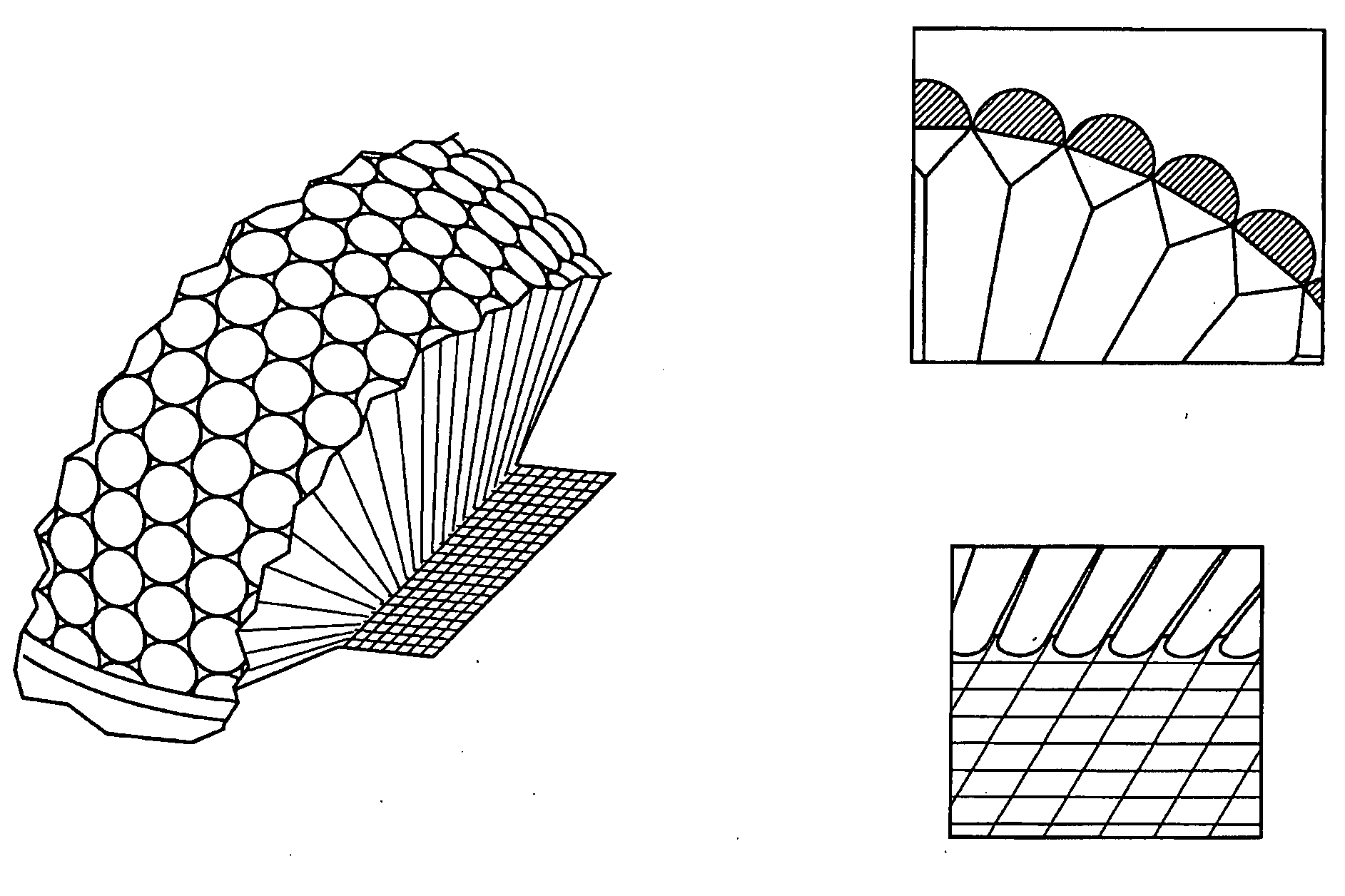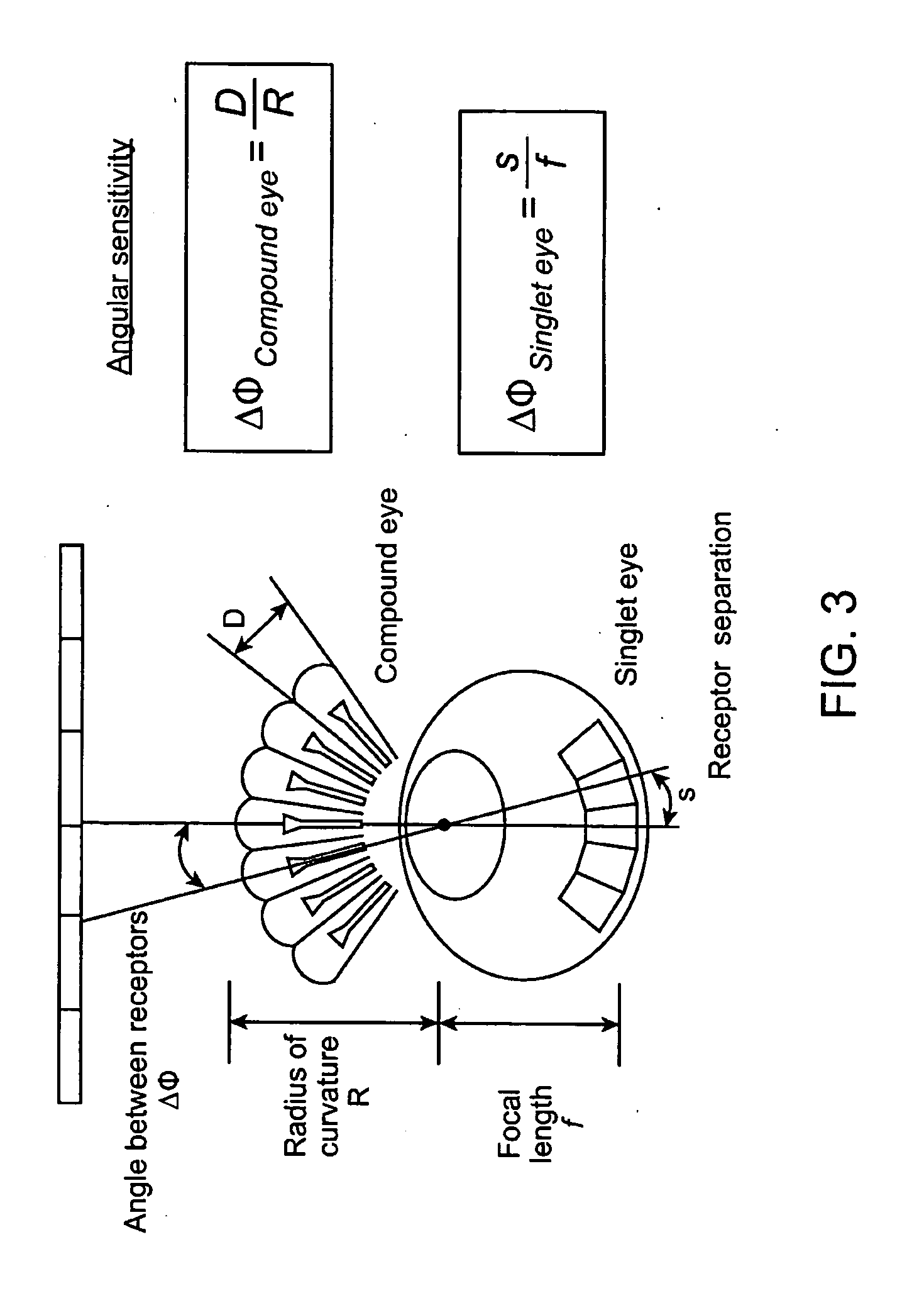Biomimetic Microfabricated Compound Eyes
a technology of biomimetic and compound eyes, applied in the direction of optical elements, instruments, bundled fibre light guides, etc., can solve the problems of bulky and expensive multiple lenses, requiring stringent alignment, and the microfabrication process and characterization methods are typically limited to physical dimensions
- Summary
- Abstract
- Description
- Claims
- Application Information
AI Technical Summary
Problems solved by technology
Method used
Image
Examples
Embodiment Construction
[0044]The compound eye in nature consists of a number of ommatidia optically isolated and radially arranged along the circumference of the eye. As an integrated optical unit, each contains a light-diffracting facet lens, a pseudocone, and a wave-guiding rhabdom enveloped by pigment cells. By collecting incident light within a narrow range of angular acceptance, each optical unit independently contributes either to offer the capability of wide field-of-view (FOV) detection or to form an overall mosaic image. Unlike single aperture vision systems, it can be appreciated that multi-aperture optical systems such as compound eyes can offer a new paradigm in miniaturizing imaging system.
[0045]In accordance with one embodiment, the distinctive features of natural compound eyes can be mimicked by polymeric synthesis based on microlens, reconfigurable microtemplating, soft lithography, and light induced waveguide technologies. Very similar to natural compound eyes, an artificial compound eye ...
PUM
 Login to View More
Login to View More Abstract
Description
Claims
Application Information
 Login to View More
Login to View More - R&D
- Intellectual Property
- Life Sciences
- Materials
- Tech Scout
- Unparalleled Data Quality
- Higher Quality Content
- 60% Fewer Hallucinations
Browse by: Latest US Patents, China's latest patents, Technical Efficacy Thesaurus, Application Domain, Technology Topic, Popular Technical Reports.
© 2025 PatSnap. All rights reserved.Legal|Privacy policy|Modern Slavery Act Transparency Statement|Sitemap|About US| Contact US: help@patsnap.com



